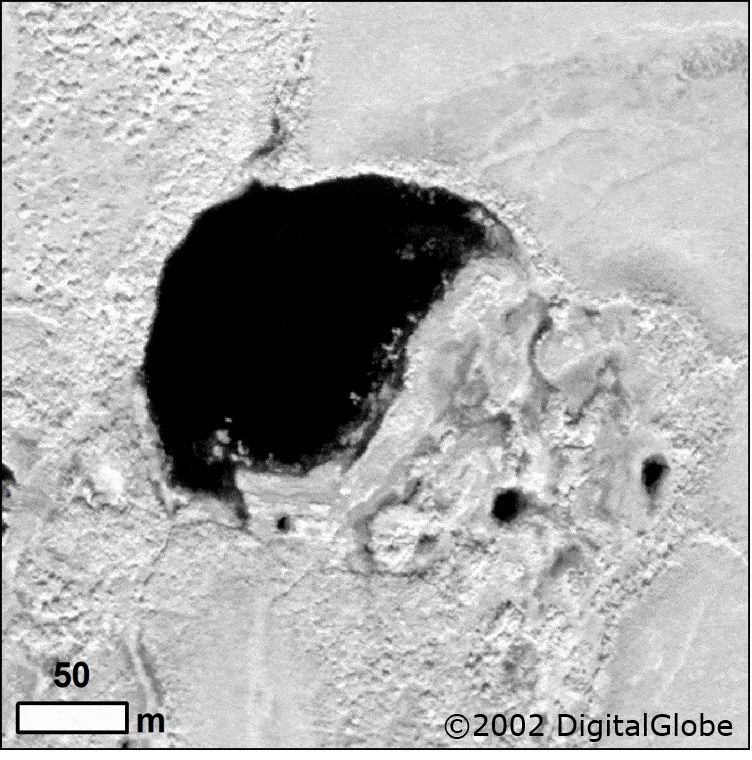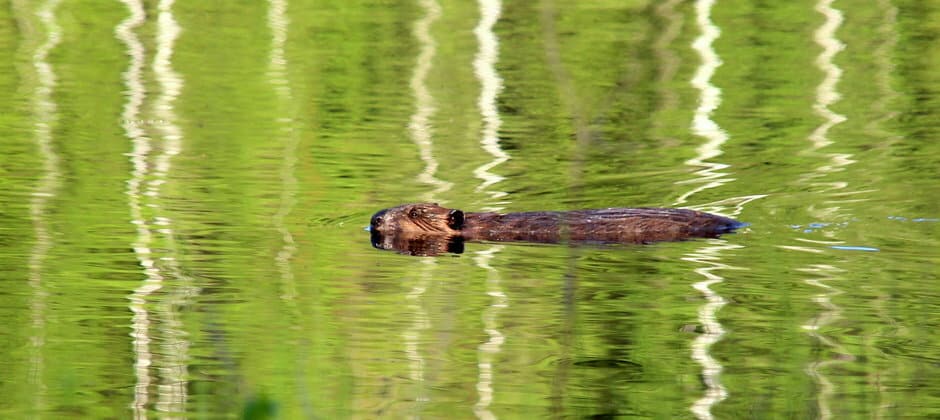Share this article
Beaver engineering may speed up Alaska’s permafrost loss
Beavers are expanding their ranges deeper into Alaska, and their ecosystem engineering may be speeding up the melting of Alaska’s permafrost.
“One major take home from our paper is that, at least in the study area we looked at, beavers can really influence what we look at for surface water changes in permafrost regions,” said Benjamin Jones, a research assistant professor at the University of Alaska Fairbanks and the lead author of a study published recently in Environmental Research Letters. “[Surface waters] have become an indicator for climate change.”
Beavers (Castor canadensis) had been expanding their ranges for some time in northwestern Alaska, partly due to climate change. Jones said that shorter winters have allowed beavers to survive better in some regions, and less seasonal winter ice growth in waterbodies could mean better overwintering habitat, allowing the animals to expand their range.
Meanwhile, Landsat satellite images have been showing changes in this part of the state — some areas had have been getting dryer and some wetter since the 1970s. Researchers wanted to find out the reason for this discrepancy.
Changes in surface water are often attributed to climate change, more specifically due to permafrost degradation or changes in temperature and precipitation.
But beavers are well-known ecosystem engineers that can create wetlands by damming faster flowing waterways. Jones and his co-authors suspected the animals could be playing a role in expanding wetlands and lakes in some areas.
The researchers focused on an area in northwestern Alaska near the village of Kotzebue, where they had a relatively high density of high-resolution satellite images from 2002 to 2019. They tracked changes in surface water, then conducted a survey of how many beaver dams covered a 100 square kilometer plot in the area.

This gif shows the changes of a waterbody affected by a beaver dam over time.
Courtesy of Benjamin Jones
The team found that typically there was a large increase in surface water in areas where beaver dams were built. The area near Kotzebue village experienced an 8% increase in surface water over the study period, and the researchers attributed two-thirds of that increase to beaver dams.
Jones said the extra water on the landscape is impacting permafrost. The whole area they studied is underlain by ice-rich permafrost and is susceptible to thermokarst formation — a term that describes the topographic landscape of small ponds or lakes and grassy hummocks.
This is great for the beavers, as the thawing permafrost and ground subsidence deepens the water and creates more suitable habitat for the furry engineers. It also likely changes the ecology of the landscape, changing the suitability of some habitats for fish, birds and other wildlife, though Jones’ team didn’t look at those effects for this study.
But their landscaping also increases the thawing of permafrost, which hastens some of the effects of climate change in permafrost-rich areas.
“The impact we were observing and the implication of beaver dam building in this area are likely different from studies conducted on beavers in other ecosystems,” Jones said.
Jones and his colleagues were slated to conduct follow-up research on beaver expansion in the area this summer that has been postponed due to the COVID-19 pandemic. But in the future, he plans to speak with indigenous people in the area to determine whether beaver harvesting has changed over the years. This can help them determine whether changing hunting and trapping practices may have played a role in the increase in beavers in the area as well as warming climate.
“It’s probably a combination of all three of those things, but we’re not sure which one is more dominant,” Jones said.
Header Image: Beavers are expanding their range in northwestern Alaska. Credit: yrjö jyske








